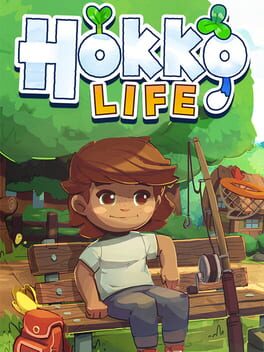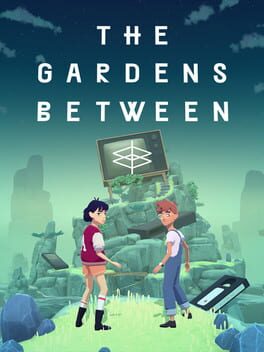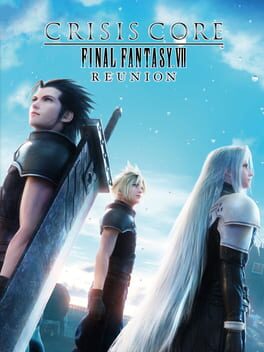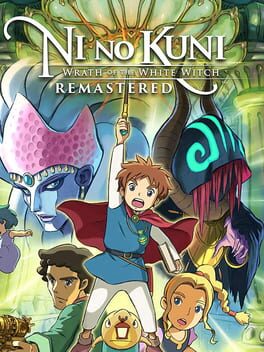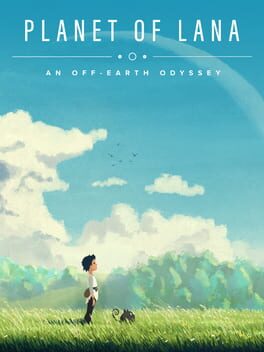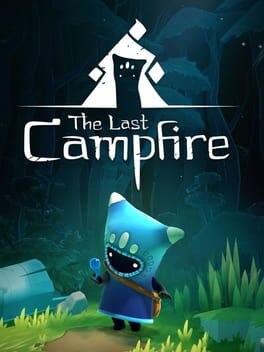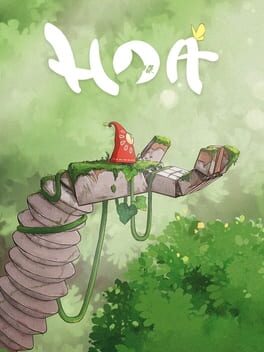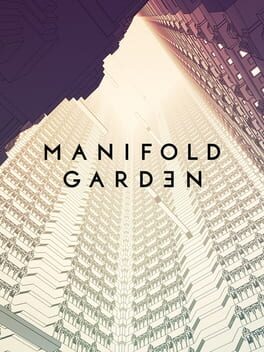TheMediaDiorama
2023
A welcomed reminder that video games do not need to be 60+ hours long, open-world, bloated with content and heavily relying on multiplayer, to be fun. Hi-Fi Rush literally came out of nowhere and nearly every second of its playtime SLAPPED!
'Sunset Overdrive' meets 'Crypt of the Necrodancer' with the flavourings of 'Bayonetta' and the comic comedy of 'Scott Pilgrim vs. The World'. Every element to this neatly packaged experience was brimming with charm, personality and just plain fun. The soundtrack, ranging from Nine Inch Nails to The Prodigy, slapped when flailing my guitar to the beat. The art stylisation was impeccable. The voice acting charismatic. The combat fluid and incredibly satisfying. The bosses intense and varied. Just...what a game!
My only gripes are the forced parrying (I suck at parrying, so that's a me issue) and the occasionally long level design. But these are nitpicks to what is a flippin' rockstar video game. ELECTRIFYING!!!
'Sunset Overdrive' meets 'Crypt of the Necrodancer' with the flavourings of 'Bayonetta' and the comic comedy of 'Scott Pilgrim vs. The World'. Every element to this neatly packaged experience was brimming with charm, personality and just plain fun. The soundtrack, ranging from Nine Inch Nails to The Prodigy, slapped when flailing my guitar to the beat. The art stylisation was impeccable. The voice acting charismatic. The combat fluid and incredibly satisfying. The bosses intense and varied. Just...what a game!
My only gripes are the forced parrying (I suck at parrying, so that's a me issue) and the occasionally long level design. But these are nitpicks to what is a flippin' rockstar video game. ELECTRIFYING!!!
2021
2018
The Gardens Between rewinds the linear tropes found in adventure puzzlers by bending time to illustrate the neighbourly affinity that can endearingly manifest in a shared back garden.
WHAT I LIKED:
+ Fundamentally abstract. The surreal dream-like journey of Arina and Frendt's nostalgic experience, comprising of various islands featuring shared memories, shrouds the non-verbal narrative with an endearing aesthetic that solidifies their friendship. The dioramic constellations, that are viewed upon completing a group of islands, highlighting their most fond memories before the simple yet effective climax hits home. Creating an effective allegory for childhood nostalgia.
+ Time goes by so slowly. The islands, representing the various puzzling stages that these two must reach the top of, each showcase unique objects that create the intricacy of each puzzle. For example, Frendt playing on a video games console which in turn creates a reactionary response to the world around them. However it is the core concept of timeflow manipulation that gifts The Gardens Between an innovative experience of lateral thinking. The characters are not controlled by the player, time is. It can be rewound to move Arina and Frendt back a few paces or resumed to continue their trek to the top. The logical thinking is implemented through the use of their interactions with the environment, which remains mutable with time itself. Every single stage posed a unique and refreshing challenge, producing a small yet profound memorability for each island.
+ An auditory and visual delight. The art direction is absolutely stunning. From the environmental details to the puzzling mechanics to the character models themselves. Every single angle of every single island was beautifully crafted, and the audio was just as euphoric. The sound editing for when time stops and rewinds was seamless, as well the general ambience when playing each variety of island.
+ Satisfyingly challenging. Whilst not the most brain-melting puzzler, various sequences do require lateral thinking. However the gradual rise in difficulty was sublimely integrated, with rarely any hand-holding included. Once a certain puzzle was solved, the sense of self-accomplishment was overwhelming!
WHAT I DISLIKED:
- Too many jumping cubes. Arina holds a lantern, to which it must be filled with a light source in order to activate the pedestal and the top of each island. She can place the lantern onto various jumping cubes, which allows her to walk on specific obstacles without them disappearing, before picking up the lantern again down the path. The vast majority of islands employed this mechanic as a means to move the lantern further on, without needing to adjust the types of puzzles that the two protagonists encounter. A consequence of this, was that the puzzling variance was lacking somewhat despite the change in environmental design, meaning they could be solved using the same thinking method as before.
VERDICT:
7/10 popcorn kernels being thrown at Frendt's face (poor boy...)
WHAT I LIKED:
+ Fundamentally abstract. The surreal dream-like journey of Arina and Frendt's nostalgic experience, comprising of various islands featuring shared memories, shrouds the non-verbal narrative with an endearing aesthetic that solidifies their friendship. The dioramic constellations, that are viewed upon completing a group of islands, highlighting their most fond memories before the simple yet effective climax hits home. Creating an effective allegory for childhood nostalgia.
+ Time goes by so slowly. The islands, representing the various puzzling stages that these two must reach the top of, each showcase unique objects that create the intricacy of each puzzle. For example, Frendt playing on a video games console which in turn creates a reactionary response to the world around them. However it is the core concept of timeflow manipulation that gifts The Gardens Between an innovative experience of lateral thinking. The characters are not controlled by the player, time is. It can be rewound to move Arina and Frendt back a few paces or resumed to continue their trek to the top. The logical thinking is implemented through the use of their interactions with the environment, which remains mutable with time itself. Every single stage posed a unique and refreshing challenge, producing a small yet profound memorability for each island.
+ An auditory and visual delight. The art direction is absolutely stunning. From the environmental details to the puzzling mechanics to the character models themselves. Every single angle of every single island was beautifully crafted, and the audio was just as euphoric. The sound editing for when time stops and rewinds was seamless, as well the general ambience when playing each variety of island.
+ Satisfyingly challenging. Whilst not the most brain-melting puzzler, various sequences do require lateral thinking. However the gradual rise in difficulty was sublimely integrated, with rarely any hand-holding included. Once a certain puzzle was solved, the sense of self-accomplishment was overwhelming!
WHAT I DISLIKED:
- Too many jumping cubes. Arina holds a lantern, to which it must be filled with a light source in order to activate the pedestal and the top of each island. She can place the lantern onto various jumping cubes, which allows her to walk on specific obstacles without them disappearing, before picking up the lantern again down the path. The vast majority of islands employed this mechanic as a means to move the lantern further on, without needing to adjust the types of puzzles that the two protagonists encounter. A consequence of this, was that the puzzling variance was lacking somewhat despite the change in environmental design, meaning they could be solved using the same thinking method as before.
VERDICT:
7/10 popcorn kernels being thrown at Frendt's face (poor boy...)
"Activating Combat Mode".
"Conflict Resolved".
"Activating Combat Mode".
"Conflict Resolved".
"Activating Combat Mode".
"Conflict Resolved".
Banging remaster of quite possibly the best PSP game of all-time. DMW is now active, graphics got a serious lick of paint (aside from some pre-rendered cutscenes) and just really is a testament to how well Crisis Core has aged. Sure some of the linearity and constant random battles slowly become annoying - though fortunately they're all fast-paced - and the third act dips narratively. But it all just slaps harder than Zack's thighs as he's squatting in Costa Del Sol. A ridiculous amount of side-missions, great story that builds upon FFVII and the Shakespearean nature of this tragedy imitates the poetry of LOVELESS.
So glad we got Reunion!
"Conflict Resolved".
"Activating Combat Mode".
"Conflict Resolved".
"Activating Combat Mode".
"Conflict Resolved".
Banging remaster of quite possibly the best PSP game of all-time. DMW is now active, graphics got a serious lick of paint (aside from some pre-rendered cutscenes) and just really is a testament to how well Crisis Core has aged. Sure some of the linearity and constant random battles slowly become annoying - though fortunately they're all fast-paced - and the third act dips narratively. But it all just slaps harder than Zack's thighs as he's squatting in Costa Del Sol. A ridiculous amount of side-missions, great story that builds upon FFVII and the Shakespearean nature of this tragedy imitates the poetry of LOVELESS.
So glad we got Reunion!
Wrath of the White Witch? Wrath of the Boss Battle Difficulty Spikes, more like. This game's sequel remains one of my favourite JRPGs, and games in general, of all-time (and I'm fully aware that's a hot-take or whatever). So it took me some time to mentally prepare myself for the original, considering that the battle system is completely different. What I got was an incredibly polished, beautifully rich and abundantly cute Pokemon-like JRPG powered by the illustrious imagination and gorgeous animation of Studio Ghibli. Seriously, the typical "end of a world" story mixed in which with alternate realities where souls are linked and its inhabitants remain heart-broken is deceptively simple. But the characters are charming, the world is colourful and the wild familiars roaming the expansive map are incredibly varied.
Errands, bounties, hidden treasures, alchemy crafting, multiple characters, hundred of familiars, casino minigames, an arena (known as the Solosseum), spells that alter the overworld, ingredient collecting...the list goes on. The game is huge, as to be expected. Beating the story alone on "normal" difficulty (I'll get to that in a minute) takes hours upon hours of exploration, grinding and collecting. And yet whenever the game got challenging - and believe me, it did - grinding never felt boring.
And that's because of the combat system. Very peculiar in a refreshing way. You control one character at a time with their unique abilities, such as casting spells or using trickshots from a gun. Then, each character can summon one of three familiars attached to them, each with their own moves and elemental types. The catch though is that the familiars' souls are linked to the caster, so if the familiar takes damage...so does the caster. It certainly produces moments of strategy, and while the combat generally is brisk and entertaining, it's definitely flawed. The fellow characters controlled by AI frequently ignore your tactics and really just do their own thing. That's the only big downside, and it's noticeable during the multi-phase boss battles which turn the challenge up to an astronomical amount. "Normal" mode? Seriously! That three-phase final boss battle - not the only three-phase boss battle by the way... - tested my limits to an extreme amount.
It's typical of JRPGs to have tough bosses to suggest to the player that they need to grind to level up, but sometimes Ni no Kuni really pushes your patience on that. And yet, for the forty-plus hours, I had an absolute blast. The charm of its colourful refinement and extensive amount of content really sets this game up for the more streamlined albeit just as expansive sequel.
Errands, bounties, hidden treasures, alchemy crafting, multiple characters, hundred of familiars, casino minigames, an arena (known as the Solosseum), spells that alter the overworld, ingredient collecting...the list goes on. The game is huge, as to be expected. Beating the story alone on "normal" difficulty (I'll get to that in a minute) takes hours upon hours of exploration, grinding and collecting. And yet whenever the game got challenging - and believe me, it did - grinding never felt boring.
And that's because of the combat system. Very peculiar in a refreshing way. You control one character at a time with their unique abilities, such as casting spells or using trickshots from a gun. Then, each character can summon one of three familiars attached to them, each with their own moves and elemental types. The catch though is that the familiars' souls are linked to the caster, so if the familiar takes damage...so does the caster. It certainly produces moments of strategy, and while the combat generally is brisk and entertaining, it's definitely flawed. The fellow characters controlled by AI frequently ignore your tactics and really just do their own thing. That's the only big downside, and it's noticeable during the multi-phase boss battles which turn the challenge up to an astronomical amount. "Normal" mode? Seriously! That three-phase final boss battle - not the only three-phase boss battle by the way... - tested my limits to an extreme amount.
It's typical of JRPGs to have tough bosses to suggest to the player that they need to grind to level up, but sometimes Ni no Kuni really pushes your patience on that. And yet, for the forty-plus hours, I had an absolute blast. The charm of its colourful refinement and extensive amount of content really sets this game up for the more streamlined albeit just as expansive sequel.
2017
An exhilarating exercise in tension building. The chase sequences ranging from a horrifically disproportionate man to two thudding butchers truly had me exclaiming “Oh my God, run run run run run RUNNNN!” (you can tell horror games aren’t my usual cup of gaming tea…). It’s short and narratively vague, but these shortcomings hardly affect the grotesque intensity on display with some atmospheric puzzles to boot!
2021
Marginally better than Steep, especially in the open-world exploration department with meaningless collectibles (seriously, pointless...), stunts and landmarks. But I still find that the controls are too janky for the racing, for example a drift turn will still send you flying off a cliff and those later events can be brutal for that, so I found myself going straight for the trick-based events rather than the racing. Much more enjoyable pulling off silly stunts.
Obtaining 750 stars just to finish the "core" game though? Rude. It takes a while...
Obtaining 750 stars just to finish the "core" game though? Rude. It takes a while...
2023
While not quite on the same level as 'Limbo' or 'INSIDE' - mostly due to loading screens breaking the one-take immersion and the lack of varied mechanics in the second half of the game - Planet of Lana is still a beautiful example of visual storytelling marinated in entertaining stealthy puzzle-solving.
Mui is my new best friend now!
Mui is my new best friend now!
Harmony of Headache-inducing map design...apparently. Personally, the twin identical castles weren't that much of a nuisance and was always allowing me to explore and find new items. It's definitely a Castlevania game at its most Metroidvania though, with little to no guidance and an incalculable amount of backtracking when switching castles. But genuinely still enjoyed it.
Bosses galore (although not as challenging as other titles in the series), endearing story, vital items everywhere and plenty of varied enemies to spice up the gameplay in each new room. Whipping my way through skeletons, lizardmen and demons with satisfying movement and a various elemental spells.
It's not the most harmonious Castlevania entry (Aria of Sorrow still the supreme GBA title) but the no hand-holding exploration is something I personally relish, and Harmony encourages that and then some!
Bosses galore (although not as challenging as other titles in the series), endearing story, vital items everywhere and plenty of varied enemies to spice up the gameplay in each new room. Whipping my way through skeletons, lizardmen and demons with satisfying movement and a various elemental spells.
It's not the most harmonious Castlevania entry (Aria of Sorrow still the supreme GBA title) but the no hand-holding exploration is something I personally relish, and Harmony encourages that and then some!
2021
A mutated misadventure of wasted potential. Ahhh...you know when you can see the beauty beneath the mounds of unrefined excrement? That's Biomutant. A post-apocalyptic open-world filled with rat...rodent...abominations, where you run around slashing creatures and executing gun-fu awesomeness. Tribes battling it out for total domination, or persuading each other to bring peace in unison (fully equipped with a redundant conscience mechanic). A looter shooter with so much promise, that it becomes eternally frustrating when the whole production is marred with an absurd amount of unpolished mediocrity.
The combat is clunky, the story is trite, the open-world tasks are repetitive, the movement is choppy and even the locations are so obviously copy-and-pasted that it leaves a biohazardous taste in one's mouth. The narration needs to die. The Dr. Seuss-esque language is hilariously dumb. The crafting is menial, as is the basic skill system. Everything about Biomutant is screaming for help from its awry development...
...and yet I didn't hate it, and I physically can't explain why. After the first rough hour, it just clicked with me where I was scaling the world not enjoying myself but not detesting the experience either. It's quick, weirdly fluid and very "pick up and play" friendly, but this unique open-world has too much lost potential to recommend.
The combat is clunky, the story is trite, the open-world tasks are repetitive, the movement is choppy and even the locations are so obviously copy-and-pasted that it leaves a biohazardous taste in one's mouth. The narration needs to die. The Dr. Seuss-esque language is hilariously dumb. The crafting is menial, as is the basic skill system. Everything about Biomutant is screaming for help from its awry development...
...and yet I didn't hate it, and I physically can't explain why. After the first rough hour, it just clicked with me where I was scaling the world not enjoying myself but not detesting the experience either. It's quick, weirdly fluid and very "pick up and play" friendly, but this unique open-world has too much lost potential to recommend.
2020
[My first game completed fully on a Steam Deck!]
Beautiful little gem! Lovely story on mortality told through the journey of a cute little ember, featuring some very soothing voice narration. Puzzles, while not challenging enough, are varied and never tedious. The world itself is filled with charm and collectibles, although pointless, to find. Just a sweet short game that never outstays its warmth and welcome. Loved it!
Beautiful little gem! Lovely story on mortality told through the journey of a cute little ember, featuring some very soothing voice narration. Puzzles, while not challenging enough, are varied and never tedious. The world itself is filled with charm and collectibles, although pointless, to find. Just a sweet short game that never outstays its warmth and welcome. Loved it!
2021
2021
2019
Architecturally ingenious, very MC Escher level design that makes for a unique short first-person puzzle experience. Some of the puzzles themselves were too easy and did not necessarily explore each puzzle mechanic to their maximum potential (particularly the double gravity tree). But, on the whole, a pleasantly hypnotising game.
2017
Figment imaginatively dives into the consciousness of nightmarish trauma and produces an artistically creative, albeit occasionally thinly drawn, isometric melodic adventure of surrealism.
WHAT I LIKED:
+ Optimism versus pessimism. Dusty, a downbeat retired protector of the conscious mind, reluctantly fights the horde of nightmarish invaders with his incredibly optimistic flying friend Piper. Nestled within the colourful illustrations that provides Dusty with a sense of adventure, is a deep story revolving around seeking lost courage. Replenishing a sense of bravery. The deepest corners of the worldly mind, zany characters and rock-inspired music emphasise the meaningful story that, more often than not, relishes in its own subtlety.
+ Salvador Dalí's masterpiece 'The Persistence of Memory' clearly inspired the surrealistic illustrations within Figment's world-building. From kettle-shaped houses perched on the floating islands of Freedom Isles to mechanised tracks supplied throughout Clockwork Town. Each of the four main areas, including Cerebrum City, stylistically resembled a different aesthetic whilst employing a consistent illustrative style, making each level colourfully beautiful to glare at.
+ Make sure your thinking cap is equipped! Figment attempts to balance its mundane yet mandatory combat with an array of logic puzzles. From sliding block obstacles that provide weight to unlock a new path, to reflecting enemy projectiles so that they erode cursed vines entangling specific items. The level design from a game mechanic perspective was excellent, and admittedly some of the puzzles in Clockwork Town were deviously fiendish.
+ Remember, remember. Lost memories are scattered throughout Figment's world. Though entirely optional to collect, they provide an additional challenge that almost certainly will force the player to backtrack through those surreal lands.
WHAT I DISLIKED:
- Whilst the aforementioned puzzles excelled in their design, their repetitive instances consequently made them more tedious with each encounter. They become longer. They become harder. And, before your filthy mind thinks of something else, they rarely introduced any new obstacles within them. More time will be spent pushing and pulling blocks rather than actually progressing through the creatively designed levels, and depending on the player's patience, will regrettably test their devotion to completing the story. The piano puzzle? Perfect design. The sixteenth light box puzzle? Not so much.
- The lead game designer, whom is also a musician, was inspired to provoke a melodic undertone through Dusty's adventure. The nightmares themselves sing spiteful lyrics during their boss encounters, with Piper piping up occasionally. At their best moments they are cheesy, however at their worst it proved to be more of a distraction from the central narrative. Most likely comes down to personal taste, coming from someone who is not a particular fan of that style of music...
- The puzzle involving three instruments needing to be pitched perfectly in order to obtain an item from a ear-shaped tree? No, thank you. As a tone deaf gamer who can't decipher a good note from a bad one, this was a heck of a frustrating puzzle!
VERDICT:
5/10 endorphins
WHAT I LIKED:
+ Optimism versus pessimism. Dusty, a downbeat retired protector of the conscious mind, reluctantly fights the horde of nightmarish invaders with his incredibly optimistic flying friend Piper. Nestled within the colourful illustrations that provides Dusty with a sense of adventure, is a deep story revolving around seeking lost courage. Replenishing a sense of bravery. The deepest corners of the worldly mind, zany characters and rock-inspired music emphasise the meaningful story that, more often than not, relishes in its own subtlety.
+ Salvador Dalí's masterpiece 'The Persistence of Memory' clearly inspired the surrealistic illustrations within Figment's world-building. From kettle-shaped houses perched on the floating islands of Freedom Isles to mechanised tracks supplied throughout Clockwork Town. Each of the four main areas, including Cerebrum City, stylistically resembled a different aesthetic whilst employing a consistent illustrative style, making each level colourfully beautiful to glare at.
+ Make sure your thinking cap is equipped! Figment attempts to balance its mundane yet mandatory combat with an array of logic puzzles. From sliding block obstacles that provide weight to unlock a new path, to reflecting enemy projectiles so that they erode cursed vines entangling specific items. The level design from a game mechanic perspective was excellent, and admittedly some of the puzzles in Clockwork Town were deviously fiendish.
+ Remember, remember. Lost memories are scattered throughout Figment's world. Though entirely optional to collect, they provide an additional challenge that almost certainly will force the player to backtrack through those surreal lands.
WHAT I DISLIKED:
- Whilst the aforementioned puzzles excelled in their design, their repetitive instances consequently made them more tedious with each encounter. They become longer. They become harder. And, before your filthy mind thinks of something else, they rarely introduced any new obstacles within them. More time will be spent pushing and pulling blocks rather than actually progressing through the creatively designed levels, and depending on the player's patience, will regrettably test their devotion to completing the story. The piano puzzle? Perfect design. The sixteenth light box puzzle? Not so much.
- The lead game designer, whom is also a musician, was inspired to provoke a melodic undertone through Dusty's adventure. The nightmares themselves sing spiteful lyrics during their boss encounters, with Piper piping up occasionally. At their best moments they are cheesy, however at their worst it proved to be more of a distraction from the central narrative. Most likely comes down to personal taste, coming from someone who is not a particular fan of that style of music...
- The puzzle involving three instruments needing to be pitched perfectly in order to obtain an item from a ear-shaped tree? No, thank you. As a tone deaf gamer who can't decipher a good note from a bad one, this was a heck of a frustrating puzzle!
VERDICT:
5/10 endorphins

